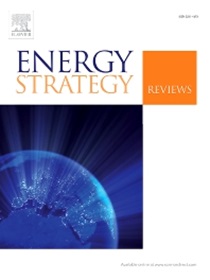环境因素对光伏系统性能退化的影响
IF 7.9
2区 工程技术
Q1 ENERGY & FUELS
引用次数: 0
摘要
光伏(PV)系统的快速扩张强调了了解影响其性能、退化和经济可行性的环境因素的必要性。本研究综合回顾175篇文献,对大气沉积物(沙尘、海盐、花粉)、气象条件(风、温度、湿度、降雨、降雪、冰雹)、遮阳和太阳辐照变异性等环境因子进行分类。引入了一种新的多级退化模式分类方法,识别了失效机制及其影响。主要研究结果显示,由于综合因素,性能损失高达60%-70%,而缓解策略,如风力冷却,可以将功率输出提高14.25%,而积雪导致的年能量损失高达12%。评估性能损失率(PLR)和退化率(DR)等性能指标,以量化长期影响,经济影响包括潜在的收入损失和维护成本。例如,解决干旱地区的粉尘积累问题可以节省20%-30%的年度清洁成本,同时减少能源低效。人工智能驱动的预测性维护的最新进展被强调为优化系统性能和最小化成本的关键。这一综合分析为研究人员、工程师和政策制定者提供了可操作的见解,强调了提高光伏弹性和经济可持续性的量身定制战略的必要性。通过解决环境因素的相互作用和引入标准化指标,本研究填补了关键的研究空白,为提高光伏系统可靠性、降低运营成本和支持在不同环境条件下向可持续能源过渡提供了路线图。本文章由计算机程序翻译,如有差异,请以英文原文为准。

Impact of environmental factors on photovoltaic system performance degradation
The rapid expansion of photovoltaic (PV) systems underscores the need to understand environmental factors affecting their performance, degradation, and economic viability. This study comprehensively reviews 175 articles, classifying environmental factors such as atmospheric deposits (dust, sea salt, pollen), meteorological conditions (wind, temperature, humidity, rainfall, snowfall, hailstorms), shading, and solar irradiation variability. A novel multilevel classification of degradation modes is introduced, identifying failure mechanisms and their impacts. Key findings reveal performance losses of up to 60%–70% due to combined factors, while mitigation strategies, such as wind-induced cooling, can improve power output by 14.25%, and snow accumulation results in up to 12% annual energy losses. Performance metrics like Performance Loss Rate (PLR) and Degradation Rate (DR) are evaluated to quantify long-term impacts, with economic implications including potential revenue losses and maintenance costs. For instance, addressing dust accumulation in arid regions could save 20%–30% in annual cleaning costs while reducing energy inefficiencies. Recent advancements in AI-driven predictive maintenance are highlighted as pivotal for optimizing system performance and minimizing costs. This integrated analysis provides actionable insights for researchers, engineers, and policymakers, emphasizing the need for tailored strategies to enhance PV resilience and economic sustainability. By addressing the interaction of environmental factors and introducing standardized metrics, this study fills critical research gaps, offering a roadmap for improving PV system reliability, reducing operational costs, and supporting the transition to sustainable energy under diverse environmental conditions.
求助全文
通过发布文献求助,成功后即可免费获取论文全文。
去求助
来源期刊

Energy Strategy Reviews
Energy-Energy (miscellaneous)
CiteScore
12.80
自引率
4.90%
发文量
167
审稿时长
40 weeks
期刊介绍:
Energy Strategy Reviews is a gold open access journal that provides authoritative content on strategic decision-making and vision-sharing related to society''s energy needs.
Energy Strategy Reviews publishes:
• Analyses
• Methodologies
• Case Studies
• Reviews
And by invitation:
• Report Reviews
• Viewpoints
 求助内容:
求助内容: 应助结果提醒方式:
应助结果提醒方式:


